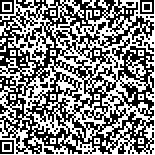下载中心
优秀审稿专家
优秀论文
相关链接
摘要

利用MTSAT-2静止气象卫星数据开展了中国区域的雪盖监测研究,结合MODIS雪盖产品及站点雪深观测数据对判识结果进行对比分析和验证。首先,根据MTSAT-2静止气象卫星数据特点,进行角度效应校正及多时相数据合成,以减少云对图像的影响;其次,根据多个雪盖判识因子建立中国区域雪盖判识算法;最后,对比分析2011年1月份MTSAT-2和MODIS雪盖判识结果,并使用站点观测数据进行精度验证。研究表明:(1)MTSAT-2雪盖判识受云影响比例约30%,MODIS雪盖产品受云影响比例约60%,MTSAT-2去云效果明显。(2)无云情况下,MTSAT-2雪盖判识和MODIS雪盖产品判识精度均高于92%;有云覆盖时,MTSAT-2判识精度约65%,优于MODIS雪盖产品35%的判识精度。(3)MTSAT-2静止气象卫星在保持高积雪判识精度的前提下,可以更有效减少云对雪盖判识影响,实时获取更多地表真实信息。该研究对中国区域雪盖信息准确监测、气候变化研究以及防灾减灾等具有重要意义。
Multi-functional Transport Satellite-2 (MTSAT-2) geostationary satellite data is used to monitor snow cover over China. Moderate Resolution Imaging Spectroradiometer (MODIS) snow cover products and station observations are used for comparison and validation. Angular correction and multi-temporal data combination are carried out first based on MTSAT-2 data characteristics. Snow cover algorithm is developed based on different indexes and thresholds. MODIS snow cover products are used to compare with MTSAT-2 snow cover images from January 1 to 31, 2011. Station observations are used for the accuracy evaluation. From this work, it can be found that: (1) cloud-contamination percentage of MTSAT-2 snow cover is about 30%, while 60% for MODIS snow cover products during the period of January; (2) under clear-sky condition, the overall accuracy of MTSAT-2 and MODIS snow cover both reach higher than 92%. Under all-sky condition, overall accuracy of MTSAT-2 and MODIS is about 65% and 35%, respectively; (3) monitoring snow cover using MTSAT-2 data can remove more cloud and obtain more information about the surface. This method can be used in monitoring snow cover China with high accuracy, which is significant to climate change research and disaster prevention.

